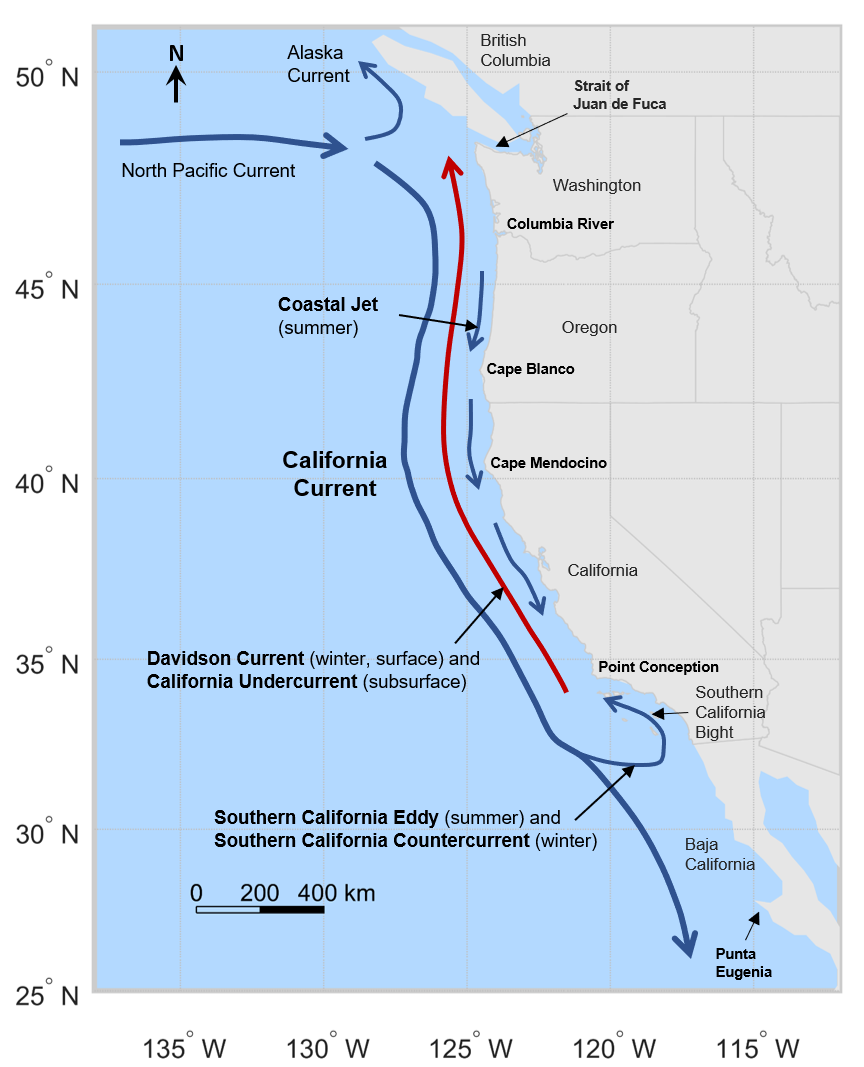Hi everyone,
This week we're talking about ocean currents. Ocean currents are part of the
ocean's circulation system and influence local and global weather patterns.
They are produced by gravity, differences in water density, winds on the ocean
surface and Earth's rotation on its own axis. They cause the movements and
exchanges of different ocean properties such as salinity, temperature and
nutrients. Ocean currents can flow at speeds of up to 4m per second however
most flow at speeds between 5cm and 50cm per second. Weather patterns and
ocean currents constantly influence one another. Ocean currents follow similar
paths as global wind do, transferring heat from the equator to polar regions.
They create and influence ecosystems worldwide, especially marine ones.
However they also spread plastics and microplastics around the world far from
their original source. This system of ocean currents is often referred to as a
global conveyor belt. Today we're going to look at six major ocean currents.

Gulf Stream
The Gulf Stream is caused by movement of water in the Gulf of Mexico. It flows
from the Caribbean up the eastern coast of the USA, before crossing the
Atlantic and flowing towards the western coast of Europe. It is a warm surface
current, meaning that it transports warm water to northeastern USA and into
the Atlantic. As it reaches higher latitudes, it cools and the water sinks
before flowing back towards the tropics. This current regulates the
temperature in the North Atlantic region and causes milder winters in Western
Europe.

|
| Gulf Stream |
California Current
This current flows from the arctic, down the west coast of the USA and towards
the equator. Arctic waters are known to be very rich in nutrients, so this
cold, nutrient-rich current flows southwards and has a significant effect on
local ecosystems. It is vital for many sea creatures especially marine mammals
such as dolphins and whales.

|
| California Current |
Kuroshio Current
The Kuroshio Current is caused by movements in western Pacific waters as the
sun heats the ocean. This warm water flows up the east coast of Japan. It
regulates the temperature in the North Pacific region and leads to milder
winters in Japan and some other East Asian countries. It also serves as a
migration route for many species.

|
| Kuroshio Current |
Agulhas Current
This current flows southwards down the East coast of Africa. It impacts the
temperatures across the Indian Ocean Region and transports warmer water
towards South Africa. This leads to higher temperatures in southeastern
Africa. This current is also an important migration route.
Antarctic Circumpolar Current
The Antarctic Circumpolar Current is a cold surface current around Antarctica.
It also transports cold water to the tropics. This current regulates the
temperature of the Southern Ocean region and the coastal areas of
Antarctica.

|
|
Antarctic Circumpolar Current
|
Thermohaline Circulation
The Thermohaline Circulation is a global deep current. It's caused by
differences in water density. Transporting warm water to the poles and cold
water to the tropics, it affects surface temperatures worldwide and
distributes heat and nutrients.

|
|
Thermohaline Circulation
|
We hope you enjoyed learning about different ocean currents and how they
affect global temperatures. We'll be back next week!
Your Green World Blog Team💚
Sources:
Images:
Antarctic Circumpolar Current:
NASA, Public domain, via Wikimedia Commons







Comments
Post a Comment